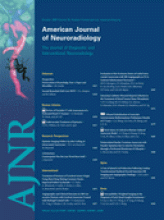We appreciate Elijovich and Johnston's comment on our study regarding the coiling of very small aneurysms.1 In our study of 1295 aneurysms in 1193 patients, procedural ruptures were twice as frequent in the 196 very small aneurysms as in the remaining 1099 larger aneurysms. Also in other studies, the relation between small aneurysm size and procedural rupture is firmly established. However, Elijovich and Johnston are surprised that in the multicenter Cerebral Aneurysm Rupture After Treatment (CARAT) study of 1010 patients,2 very small aneurysm size could not be identified as a risk factor for procedural rupture.
Failure to recover an obvious and well-established risk factor should not lead to surprise but to questioning the statistics and mathematic methods that were used. Of the 1010 patients in the CARAT study, only 299 were coiled and 711 were clipped. Risk factors for procedural rupture were not separately evaluated for coiled and clipped patients, whereas those risk factors are quite different. In CARAT, peculiar and irrational parameters were studied as possible risk factors for procedural rupture, such as hyperlipidemia, hypertension, diabetes, smoking history, etc. We all know that a procedural rupture during coiling is caused by mechanical perforation of the aneurysm wall by the catheter, microguidewire, or coil, mostly in combination with an unfavorable vessel and aneurysm geometry. This risk is increased by small aneurysm size, recent aneurysm rupture, and probably use of supporting devices.
In turn, we are not surprised that the methods that were used in CARAT (where more than two thirds of aneurysms were clipped) did not come up with small aneurysm size as a risk factor for procedural rupture, but instead with trivial parameters such as Asian race (odds ratio 26), black race (odds ratio 11), and chronic obstructive pulmonary disease (OR 14). The methodology of the CARAT study has been the subject of detailed criticism earlier, and we agree with Nguyen and Raymond that the results of CARAT can hardly be taken seriously.3
As a second point of criticism, in contrast to the findings in CARAT, Elijovich and Johnston said, “The present study also reported no increase in mortality/morbidity associated with IPR [intraprocedural rupture] in patients treated endovascularly.” This personal interpretation of our reported results is completely wrong. We found that overall morbidity and mortality in 196 very small aneurysms was not higher than that in the remaining 1099 larger aneurysms, despite twice as many procedural ruptures. Procedural rupture led to poor outcome in one third of patients, both in very small and in larger aneurysms. It is obvious that procedural rupture has a negative effect on outcome, but we did not specifically address this topic.
Drs Elijovich and Johnston's comparison of the results from our study (based on robust data and simple statistics) with the irrational conclusions from the fuzzy statistics in CARAT cannot be categorized as serious criticism.
References
- Copyright © American Society of Neuroradiology












